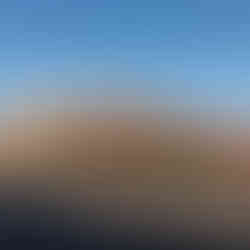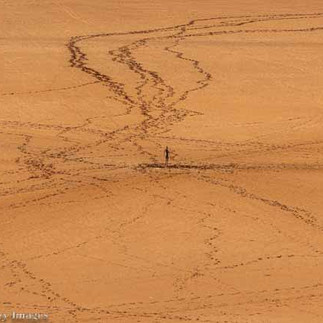The Golden Outback
- Lauretta Stace
- Jan 13, 2023
- 4 min read
Rich in history and great Aussie stories, with spectacular scenery and unique fauna and flora, the golden outback has been a worthwhile diversion on our Odyssey. This journey has taken us from Norseman to Kalgoorlie, Menzies, Lake Ballard, Gwalia and back again. We've witnessed the Great Western Woodlands, massive gold mines, ghost towns, spectacular salt lakes, art, history and culture all combined with the beautiful scenery - red dirt, giant granite boulders, plains of eucalypts, mulga and the vast horizon, shimmering in the sun.

Great Western Woodlands
The Woodlands are an area of great biological richness that extends over 16 million hectares - about the same size as England. It is regarded as the largest remaining area of intact Mediterranean climate woodland left on earth and contains about 3000 species of flowering plants. (dpaw.wa.gov.au).
Our visit to Norseman enabled us to see some large tracts of the Woodlands and witness the beauty and diversity of the eucalypts, acacias and other trees, plants and shrubs. The amazing thing is that these Woodlands survive on minimal rainfall each year and, in many parts including Norseman, have no other permanent water source to draw on. The eucalyptus bark has a vast palette of colour including salmon pink, ghostly grey, brown, tan, gold, orange, yellow, green and black. The leaves on the trees are often shiny with oil or have a silvery coating to protect them from the harsh sun. It's a delight to behold these majestic forests!
Close to Norseman, we also visited Lake Cowan - a vast salt lake, Dundas Rocks, Jimberlana Hill and Bromus Dam. Dundas Rocks were particularly interesting with massive boulders dating back 550 million years sitting serenely in picturesque bushland. One can only imagine the conflagration that must have taken place to throw these massive chunks of rock through the air all those years ago.
Norseman
The town of Norseman was named after a horse who was owned by a gold prospector in the late 19th century. Apparently, he lifted up a rather large gold nugget with his hoof and another Australian gold-rush began. The gold mine is still active today.
Kalgoorlie Boulder
Kalgoorlie Boulder is Australia's largest Outback City and one of the most famous gold mining centres on the planet. It has a rich history of Aboriginal custodianship dating back tens of thousands of years before the early European explorers paved the way for gold seeking prospectors in the 1890's. Today, it's an eclectic mix of high-tech mining, historical gems, grand federation buildings and a vibrant art scene. Lots of street art decorates the walls and buildings throughout the town centre which adds colour and life to the city. The Karlkurla Bushland Park and Arboretum were both outstanding offering visitors and residents several kilometres of walking tracks through natural, peaceful bushland. The super-pit mine was very impressive and a display of great human ingenuity in engineering and technology.
Lake Ballard
We stayed overnight at Menzies, 130km north of Kalgoorlie to enjoy the Shires of Menzies and Leonora. Our first stop was Lake Ballard to view the fascinating art installation "Inside Australia" which is Australia's largest outdoor gallery. The 51 sculptures were designed and created by Turner Prize-winning British artist, Antony Gormley. The metal sculptures are set over 10 square kilometres across the vast salt-pan of Lake Ballard and represent the residents of Menzies whose bodies were scanned for casts. It's a dramatic and amazing canvas. The first things that hit you are the colours and the vastness of the landscape. The Lake is salt-white with a coating of red dust, giving it a beautiful pink hue. The lake shimmers in the sunlight as your eyes are drawn to the horizon and it gives you a sense of how vast the country is, and how small we humans really are. The sculptures are spaced far apart, but are connected by the footprints of human travellers (like us), who walk between each figure, creating connections for others to see. Fascinating and wondrous!
Gwalia
Further north, we ventured into the historic precinct of Gwalia to enjoy morning tea at the old Mine Manager's house and wander around the abandoned miner's cottages and stores in the old township. Gwalia still has a working gold-mine. It is the deepest trucking mine in the world at 1600m below the surface. It takes approximately 80 minutes for a truck to travel the 11.5km from the bottom of the pit to the surface on a 1:7 (14%) gradient. The town is now essentially a ghost town but it has a very interesting history. Herbert Hoover, who was to become the 31st President of the United States of America, worked as the Mine Manager at Gwalia in his early 20's. He commissioned the building of Hoover House and set about modernising the gold-mine operations. The precinct now contains an excellent museum of equipment and stories, including some humungous pieces of mining equipment that were built in Britain and transported to Gwalia (without modern rail and roads!). It gives you some insight into how difficult the early mining operations must have been and the hardships suffered by the prospectors and workers. Operations today are high-tech and very efficient. We then took a short side-trip to Niagara Dam on the way back to Menzies. This is now a camp-site and the dam is described as a 'white elephant'. Early miners had to build these dams in order to hold water to support their operations, but they are no longer viable as going concerns. Water to these arid regions is now piped in from Perth.
Next stop - the southern WA Coast!
































































































































































コメント